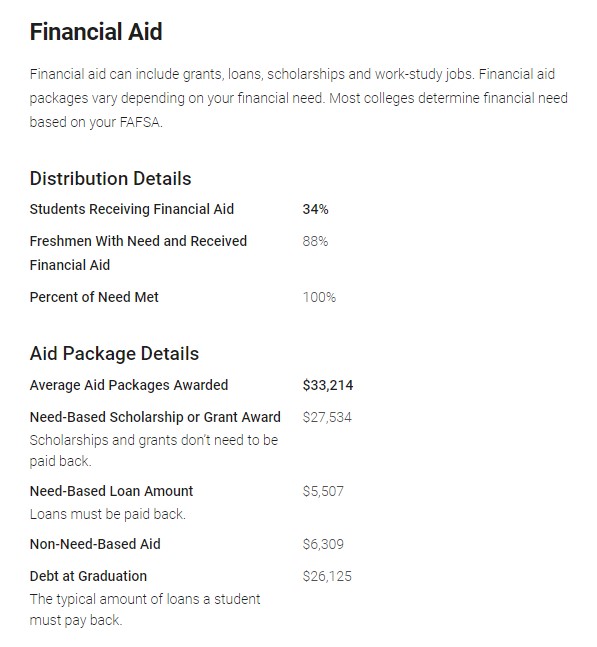For many Americans, affordability will be a major factor in their college decision. Therefore, it’s incredibly helpful to find out which schools have deep pockets and a generous disposition.
So, how do you do this? Where can you find out how much is in a college’s endowment fund, and how likely is it that this college is likely to share it with you?
Using Harvard to Explain Endowments and Financial Aid
Before getting into the nuts and bolts, I’ll respond with another question: Did you know that Harvard has enough money in their endowment to pay for every student’s cost of attendance in perpetuity? Yet Harvard still charges $70,000 per year. My question for you is, “Why?”
It’s because they can. It’s simply a matter of supply and demand. There are plenty of parents who will gladly pay for the privilege of having that crimson bumper sticker. If you can afford $70,000 per year, Harvard will gladly accept your money.
However, if you CAN’T afford $70,000 per year, Harvard has $50 Billion in its endowment that can help you cover your costs. If you’ve got the brains but not the bucks, Harvard doesn’t care—they want the best and the brightest, regardless of their ability to pay.
Some schools have lots of money, and some schools don’t. Some schools give money to students in need, and some don’t. We’re here to tell you where you can find this information online to help in your planning process.
Finding Endowment and Financial Aid Figures
Focus on these two websites:
- Wikipedia (yes, Wikipedia)
- CollegeBoard.org.
This research is essentially a two-step process. First, using Wikipedia, you want to see which schools have the most money. Second, you want to check the College Board website to see their track record of meeting need-based aid.
While Wikipedia has a wealth of information, we generally don’t think about it as a true research site. For college endowments, however, they receive their information from NACUBO – the National Association of College and University Business Officers—a source that keeps very good records of this information. Wikipedia shows a simplified dashboard of NACUBO’s records.
So, here’s what to do:
- Sequence 1: Researching college endowments by size
- Step 1 – Go to Wikipedia and type “List of Colleges and Universities in the United States by Endowment”
- Step 2 – Scroll down, and you will see the list. Below is a sample screenshot:

- Sequence 2: Checking the College Board website for corresponding financial aid stats
- Step 1 – Let’s use the University of Virginia, which has an endowment of $10 billion. Go to collegeboard.org.
- Step 2 – Type the University of Virginia into the search bar. Click on the link.
- Step 3 – Select “Costs”
- From here, you will be able to see a host of information regarding the school’s financial aid track record:
- Average net price by household income
- Percentage of students with need who receive aid
- Percentage of need-based aid that is met
- Average first-year financial aid packages
- Here’s a sneak peek:
- From here, you will be able to see a host of information regarding the school’s financial aid track record:

Hidden Gems: Colleges With Largest Endowments Per Student
Endowment size is not the be-all-end-all. The more important number you should look at is $$$/per student. For example, Ohio State has an endowment of $3.6 billion but also 47,000 undergrads. In contrast, Grinnell College has a $2.9 billion endowment and only 1700 undergrad students. Who do you think is going to give more money on average?
So, when trying to find the most generous colleges, look for the schools that have sizeable endowments but smaller student populations. They are almost all private and very good schools. Here are several:
- Washington and Lee University
- Grinnell College
- Wake Forest University
- University of Richmond
- Lafayette College
- Tulane University
Key Takeaways & Action Items
The cost of college typically outpaces inflation. As a result, more and more families are finding themselves eligible for need-based aid.
Knowing how to efficiently use online resources to discover where the money is and how likely colleges are to give it will give you a massive boost in the college search.
Action Item #1: Run an EFC calculation to see how much aid you are eligible for in the first place. This will help narrow down your search and provide a line in the sand for your financial planning.
Action Item #2: Join us for one of our FREE educational workshops, the Little-Known Secrets of Paying for College. We partner with schools, businesses, and community organizations to teach this workshop, and most are open to the public!
Action Item #3: Consider talking to a college funding coach to discover which colleges are the best financial fit and develop a unique financial plan that is focused on reducing the cost of college and paying for it as efficiently as possible.
Author:
The College Funding Coach Editorial Team
This post is Part Six of a seven-part article series entitled How to Utilize Online Resources for College Planning:
Part 1: How to Research Scholarships
Part 2: Utilizing the College Board Website for Research
Part 3: College Planning Alphabet Soup – FAFSA, CSS, EFC, COA
Part 4: Researching Student Loans
Part 5: How to Check Your Admissions Probability for College
Part 7: Educating Yourself When It Comes to Paying for College


